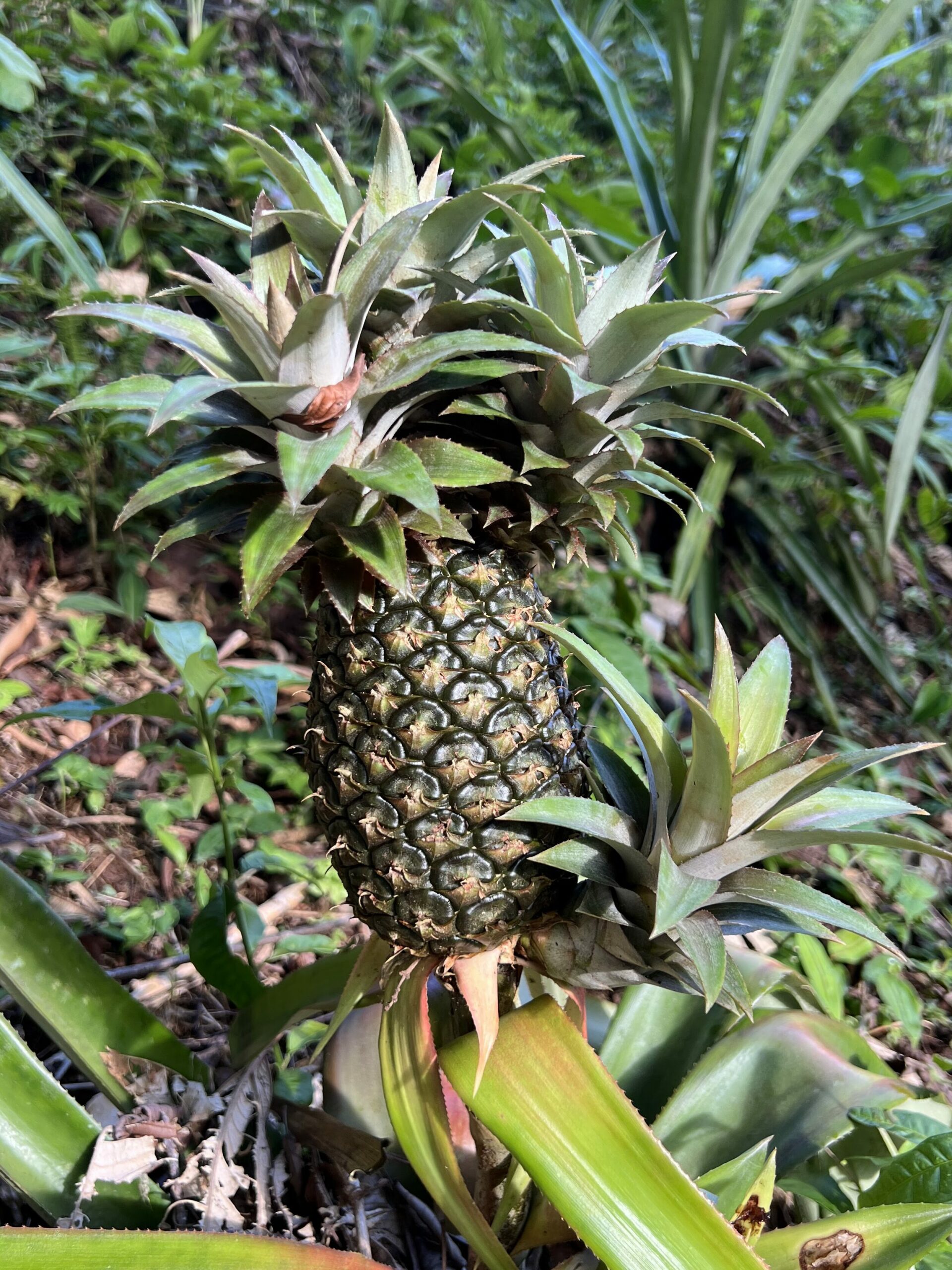
In early January, 2023, I had the opportunity to travel to Nuquí, Colombia to learn about and support a friend’s farming project in the rainforest. Nuquí is a small village of about 8,000 residents, a unique place in the world because it remains quite isolated from major cities due to the nature of its surrounding landscape. The village located in the gulf of Tribugá in the Chocó department of Colombia and is surrounded by dense rainforest and other waterways including rivers and coastal estuaries. The majority of the Nuquí population are afro-Colombians while another large portion of the population is represented by members of local Indigenous Embera tribes. The economy is based on three main components: fishing, farming, and eco-tourism. My friends, Yura Sapi and Yowar Mosquera have started a food sovereignty and farming project in the area called Protectores de la Tierra (Protectors of the Earth). This project aims to cultivate and (re)-cultivate over 100 acres of Black-owned land in order to feed the community of Nuquí and other local communities in the gulf of Tribugá.
My intentions for the trip were to strengthen my friendships with Yura and Yowar, to learn about and support their organization’s vision, and to gain hands-on insights into the importance of food sovereignty and community-based agriculture. While POP mainly focuses on local collaborations with farmers, orchardists, and educational organizations in the Philly area, I gained the enthusiastic support from all the POP staff to engage in this transnational collaboration. My close friend from childhood, Maddie, who is also passionate about local food sourcing and decolonization, joined me for the trip. From just our short time there, I began to see how the farmers in Nuquí hold a deep respect for and knowledge of the surrounding waters and natural landscape. While I learned a tremendous amount of things along my journey, including how to grow a variety of tropical fruits, how to avoid getting stuck on the beach at high tide, and how to sleep during a loud rainstorm, my main takeaway was the following: quite similar to our vision here at POP, farmers in Nuquí prioritize growing practices based upon the principles of relationship-building and community. I am excited to share some of my learnings with you.
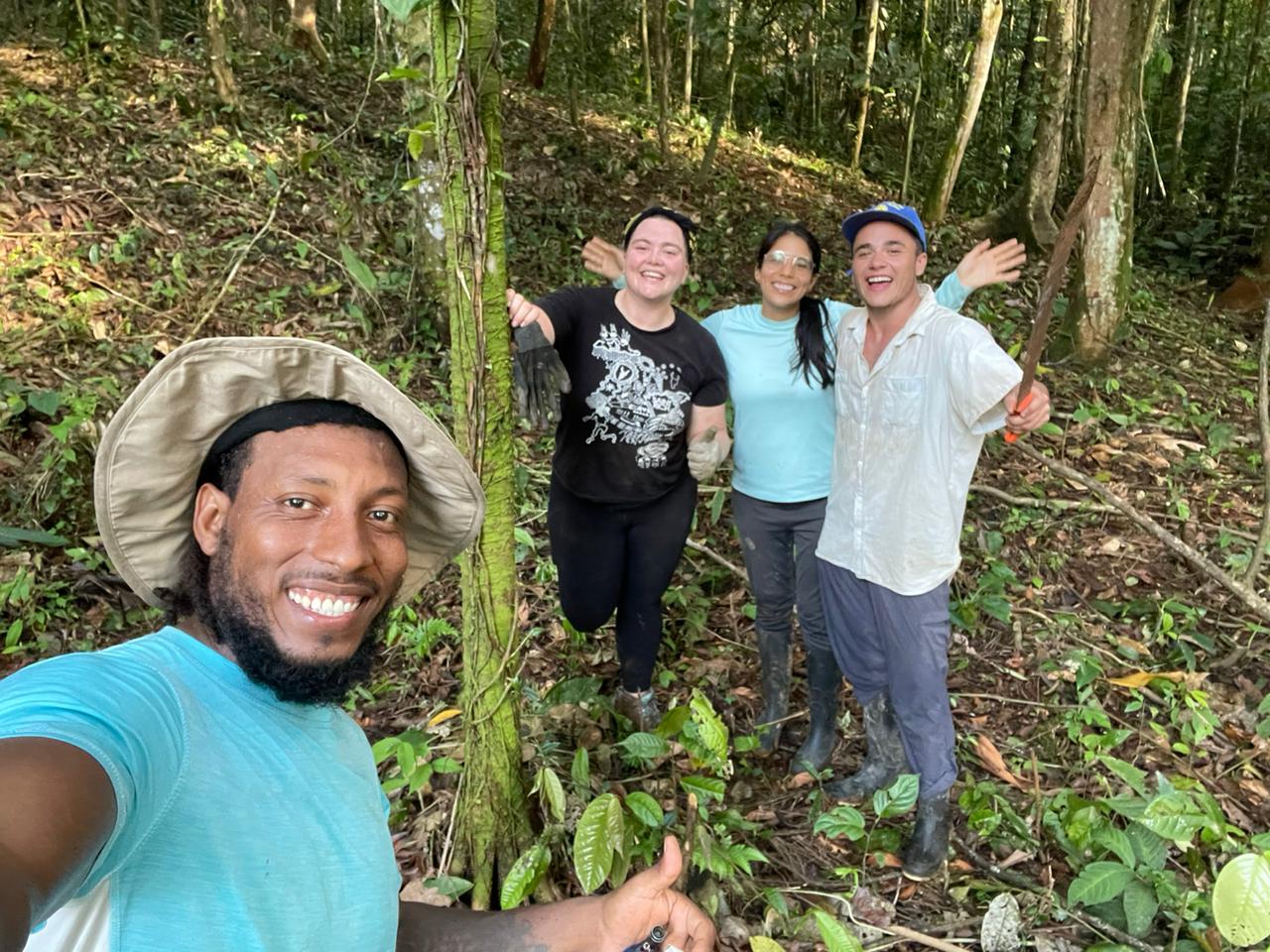
Nuquí remains quite isolated from major cities in Colombia because there are no highways that reach all the way to the gulf. The only way in and out of the village is by boat or small airplane. Prior to rapid urbanization, Indigenous tribes and later Afro-Indigenous and afro-Colombian communities in the region sustained themselves on healthy foods and medicines harvested directly from the surrounding lands and waters: fish, fruits, vegetables, and other medicinal herbs. A generation ago, with increased access to motor boats and air transport, farmers began exporting these products out of the region. At the same time, communities in the region began importing outside products such as already-dried rice and beans, or grain products such as pasta. While these imports increased the amount of low-cost food and variety to the region, local farmers became unmotivated to compete with mass production prices. Today, however, we see problems emerge whenever prices go up or when transit becomes restricted. In addition, many of these highly processed products ended up replacing nutrient-rich fresh food. At this time, with an ever-increasing tourism community, Nuquí has become much more reliant on outside food sources and therefore reliant upon the fluctuating sociopolitical climate of the country and world. The global pandemic and the Colombian national strike are examples of world events that threatened Nuquí’s already fragile food sourcing. This issue is one of the driving motivations for Yura and Yowar’s organizational mission: instead of relying upon outside sources for food, many of whom import highly processed or sugar-concentrated foods, Protectores de la Tierra aims to rebuild local food production in order to bring healthy food production back into the hands of the local community.
Maddie and I arrived in Nuquí on a plane from Medellín, Colombia’s second largest city. Below, you can see an aerial image of the landscape I saw from the plane window. You can see a small inland village bordering the river which winds through the rainforest to the pacific ocean.
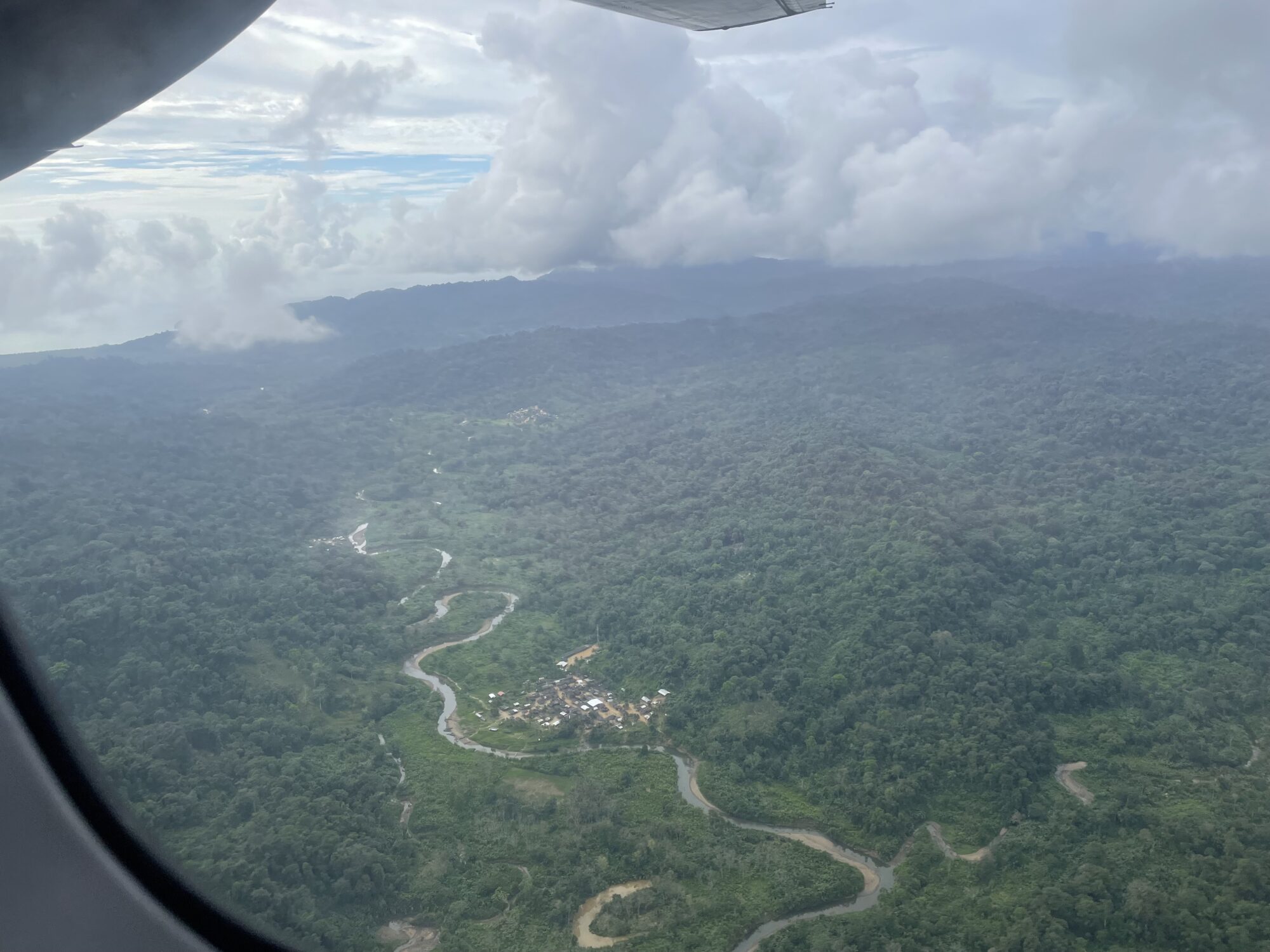
Respecting the Waterways
While water is a necessary component of all agricultural work, including the orchard work we do here in Philly, I gained a new appreciation for the way in which the farmers in Nuquí have built a deep relationship with water in all of its forms: rivers, estuaries, rains, and tides. Why must farmers be so aware of the water sources in the area? Many of the farms in the region are slightly inland from the coastal villages, requiring a boat-ride through the jungle to access the land. The waterways are like roads in Nuquí operating off Indigenous ancestral technologies. Building roads in a rainforest is expensive and time-consuming especially especially for an individual or community with limited access to capital. Yura Sapi explained to me, “following the rivers is like following the paths nature has already provided to us.”
On my first day on the farm, we hopped aboard a small boat that was docked in one of the coastal estuaries in Nuquí and began winding our way through the mangrove forest. As a relatively inexperienced boatsperson myself, I mindlessly hopped on board and enjoyed the ride. My travel companion, Maddie, however, was an experienced sailor and master boater. She let me know that this winding waterway was extremely challenging to navigate, as one had to be aware of so many moving parts: the level of the tides, the extreme currents caused by heavy rainfall, and any low-hanging vegetation that might compromise the safety of the passengers on board. Anyone hoping to farm these lands must develop an understanding of tidal patterns and seasonal rains.
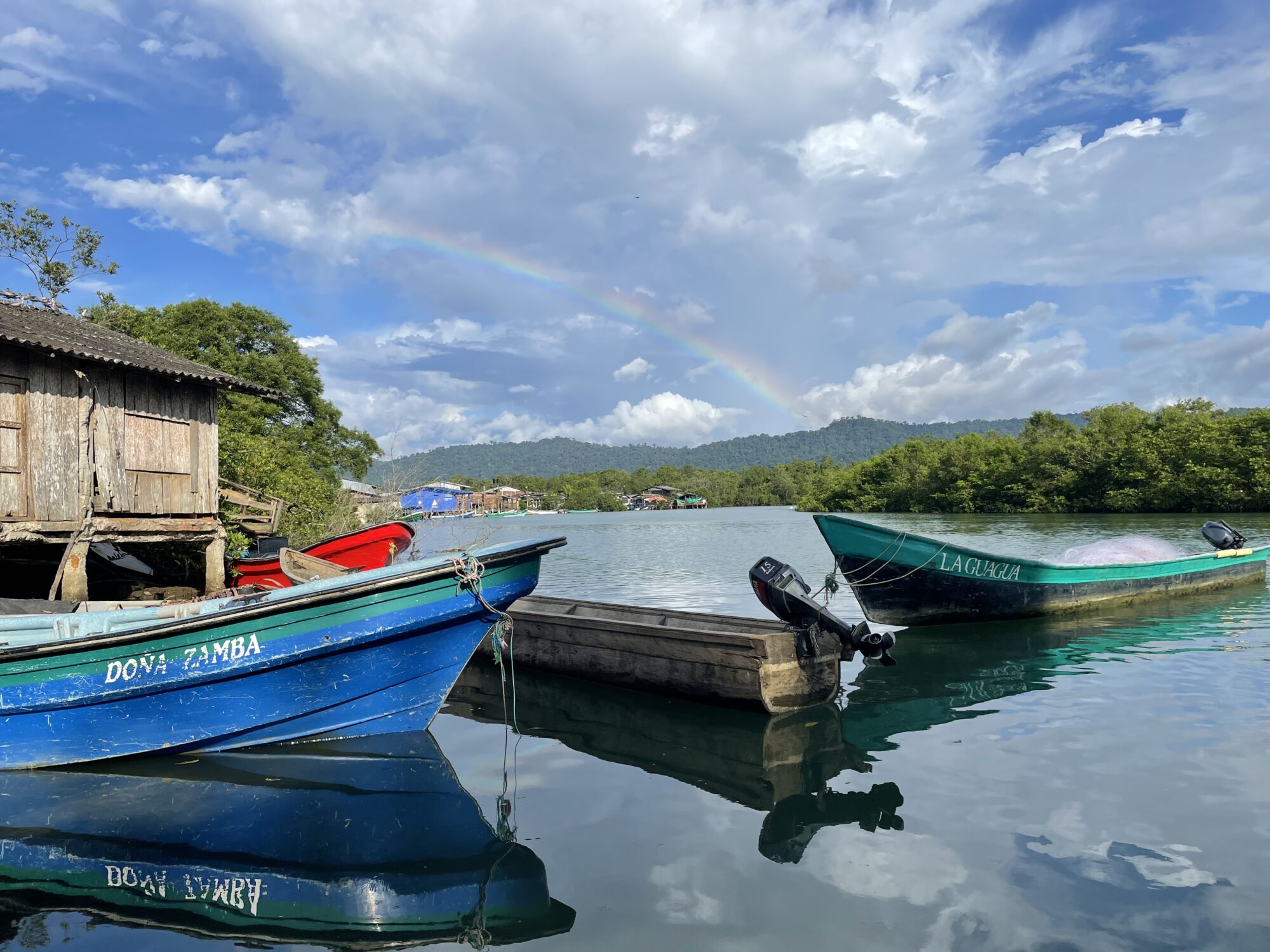
A generation ago, Yowar’s grandmother began farming the land he currently cultivates. Sitting down for lunch one day, Yowar recounted to me a few childhood memories. When he wasn’t at school, his grandma would scoop him up and put him on the boat and take him out to the farm so he would “stay out of trouble in town.” Having traveled this windy river since he was a little kid, Yowar has been re-familiarizing himself with each twist and turn of the river since he was able to return to his grandmother’s farmlands in June 2022. If he leaves at too low of a tide, he might run into submerged logs that could damage the boat or motor. If he leaves at too high of a tide, the riverway becomes impassable for boaters as the water rises to the level of the hanging mangrove roots. While Yowar uses a motor boat to get to the farm, the more common vessel is a long wooden canoe, a traditional vessel designed by Indigenous people in the region. Yowar described that people living in inland communities will make the daily trip down the river via canoe, carrying produce such as bananas, plátanos, or cane to sell in Nuquí.
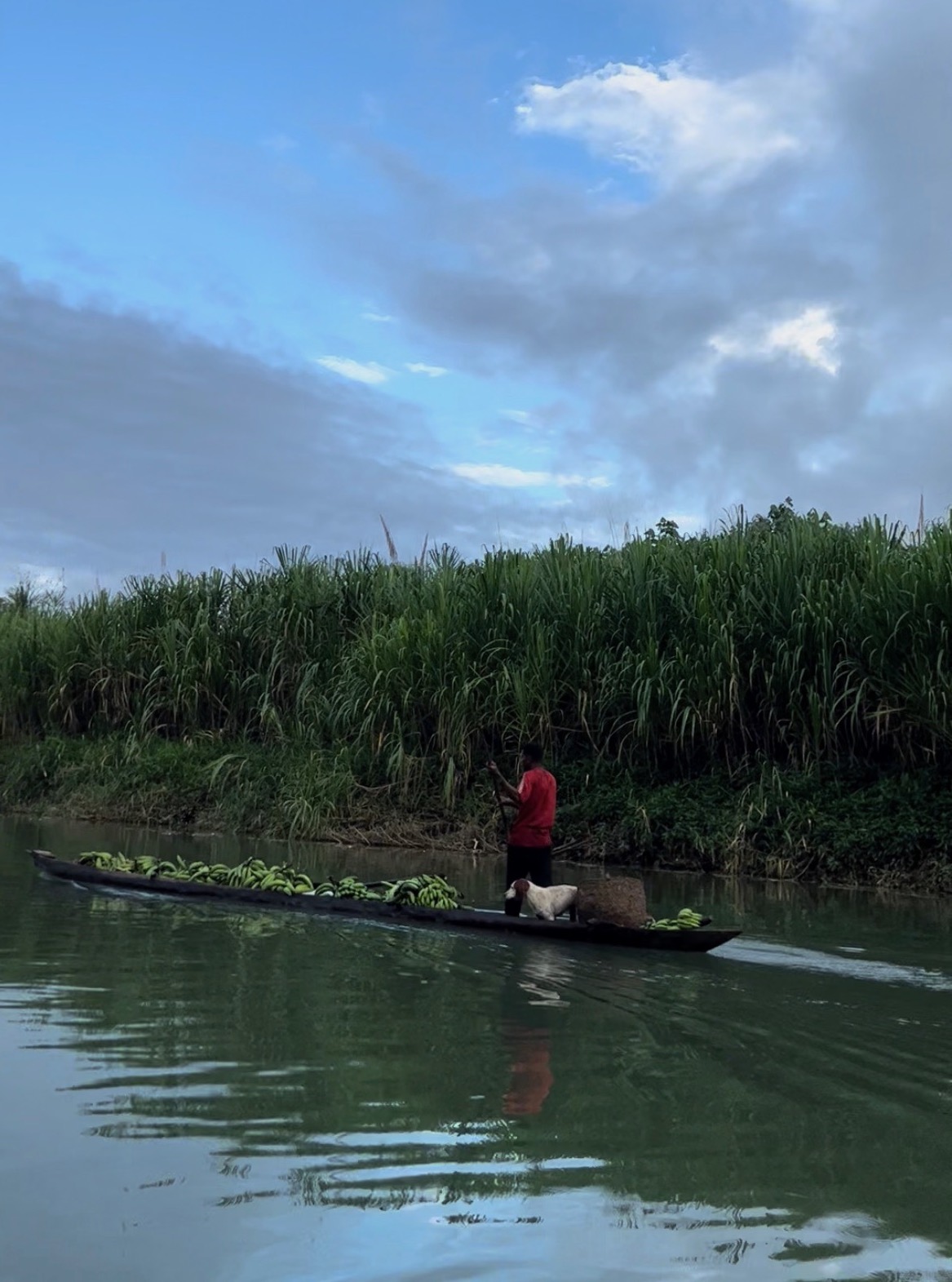
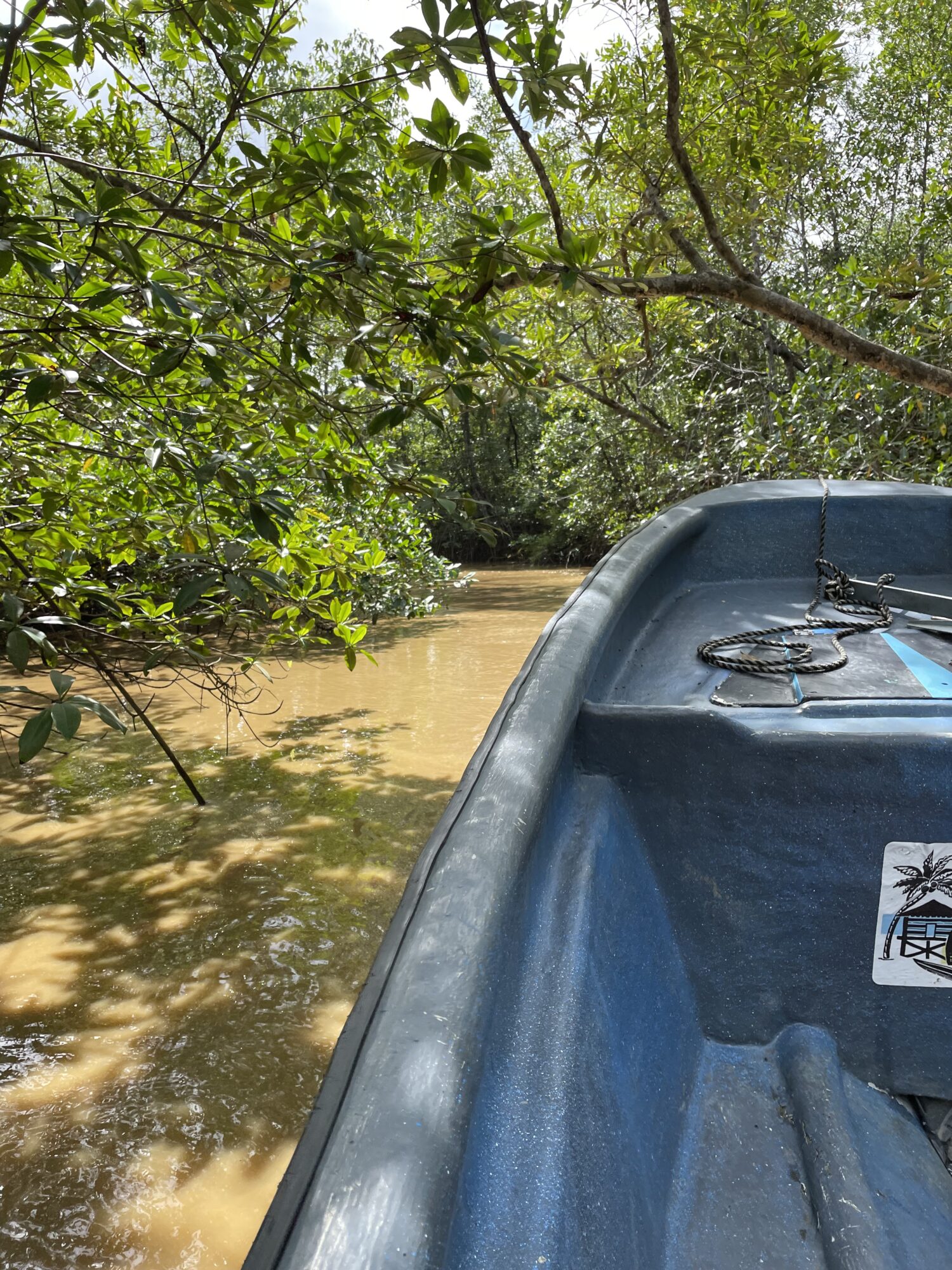
Community-building and Relationality
From my perspective, it is clear that Yowar and Yura’s farming project is built upon the principle of relationality. Building respectful and reciprocal relationships with the land, water, and neighboring communities is crucial to farming this land. This is not a novel concept. In fact, Yowar describes that he learned this philosophy from his ancestors. During his grandparents’ generation of farming, there were farmers that built local sharing economies called mingas. A minga describes a collaboration of neighboring farmers who joined together to work eachother’s land. One day, the minga might focus their energy on farming rice on one family’s land. Another day, the collective chooses to focus their efforts on tending to the corn on another family’s land. Then, when it is time to harvest, the minga shares the rewards. In this sharing economy, the focus is less on profit and more on the simple goal of having enough food and nutritional variety for everyone in the collective.
Farmers not only create sharing networks with their human neighbors, but they also build relationships with the surrounding land and animals. One example of this reciprocity is the way in which the farmers source their compost and fertilizer. There are two types of compost that the farmers use selectively to enhance growing. Resembling wood mulch, hojarasca is an organic vegetative material that washes up along the coastal tidal lines. Farmers bring their boats to the coast, load up their canoes with hojarasca and bring it back to their farms. The other form of compost is called tierrahormiga, which is a material created by a species of rainforest ants. A whole team of ants work together to make cuttings from giant leaves. Then, marching in a long line, the ants transport the leaf cuttings to their nest. There, they process these cuttings with certain enzymes to produce a mud-like material, called tierrahormiga, used to construct their nest. Farmers collect this material to fertilize and enrich the soil for their crops.
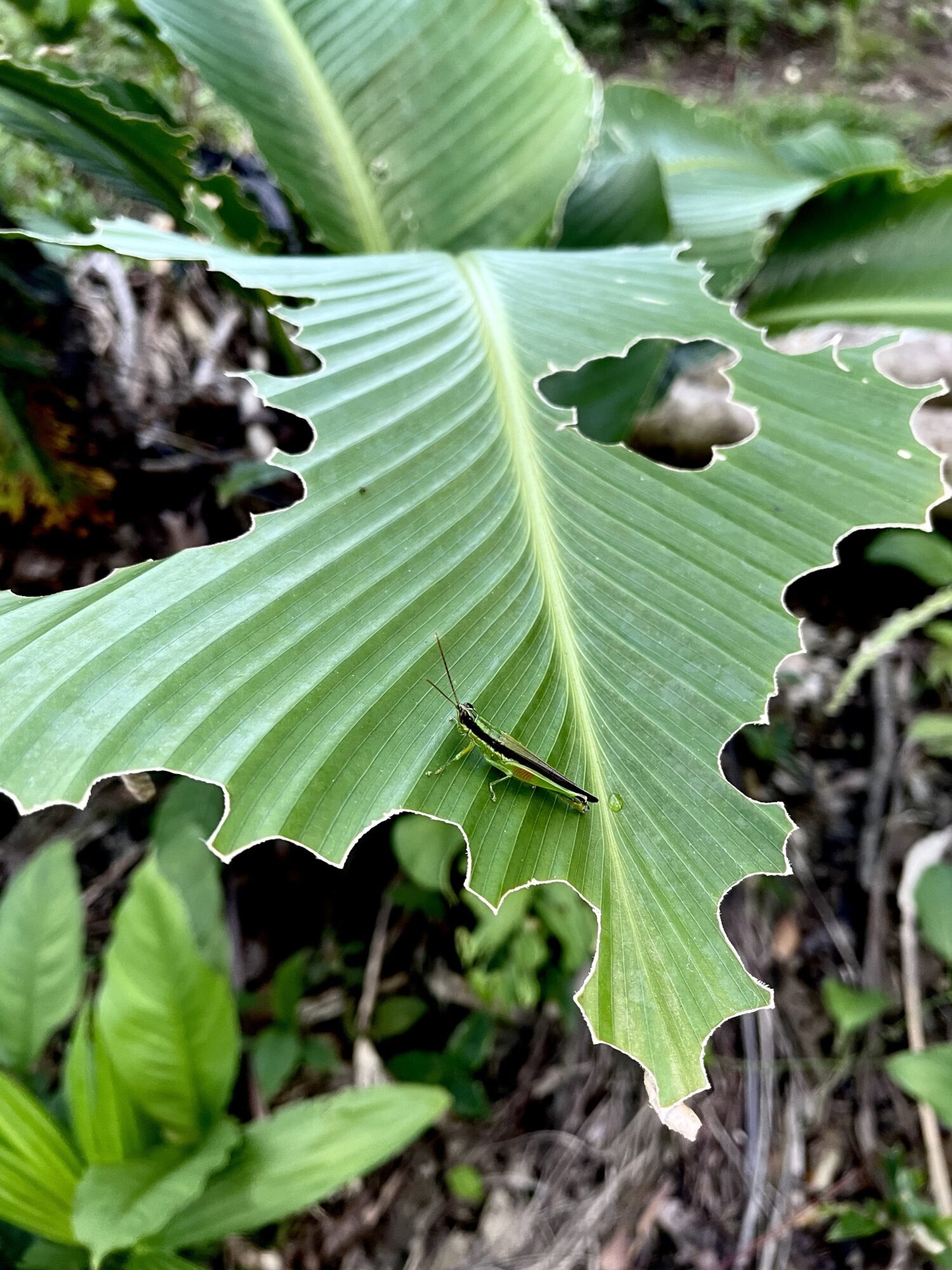
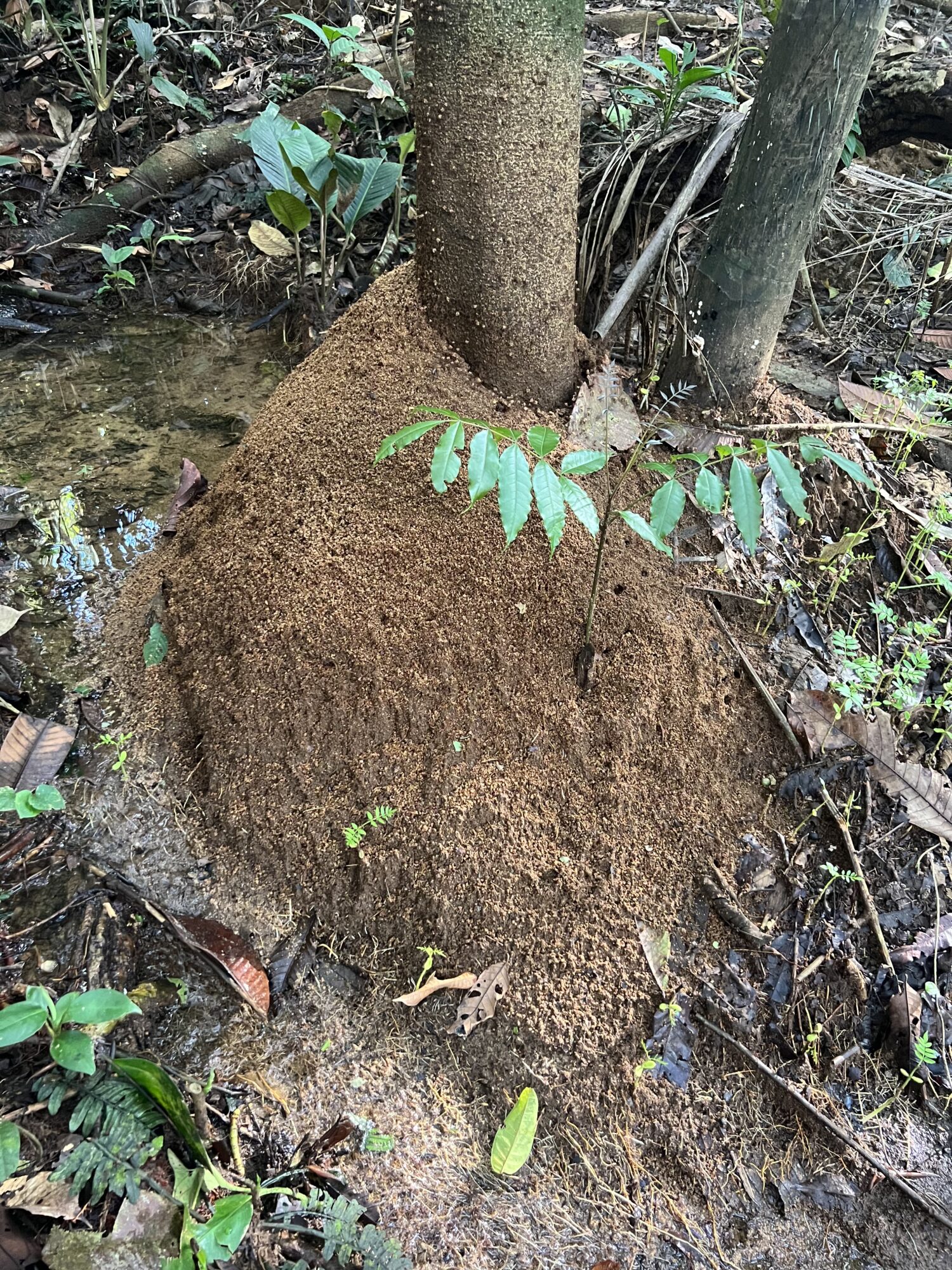
Rainforest Abundance
Taking the time to learn about and give respect to the surrounding land and animals, Yura, Yowar, and the other local farmers receive gifts in abundance from the farm. The amount of delicious food that can grow in the wet, warm climate is truly extraordinary. The soil at the farm ranges in moisture levels and consistency. There are parts of the farm that have thick, muddy soil. I learned this the hard way when I first arrived at the farm. I stepped off the boat and my boots quickly submerged in about six inches of sticky mud. There are two other sections of the farm: one that consists of sandy soil and another that is a completely submerged marsh. Soil differences, as well as access to sunlight, are two factors that the farmers consider when deciding which crops to plant, and where. Yowar and Yura plant yucca, ginger, plantain, and piña in the sandy soil. In the marshy soil, they are preparing to plant rice and taro.
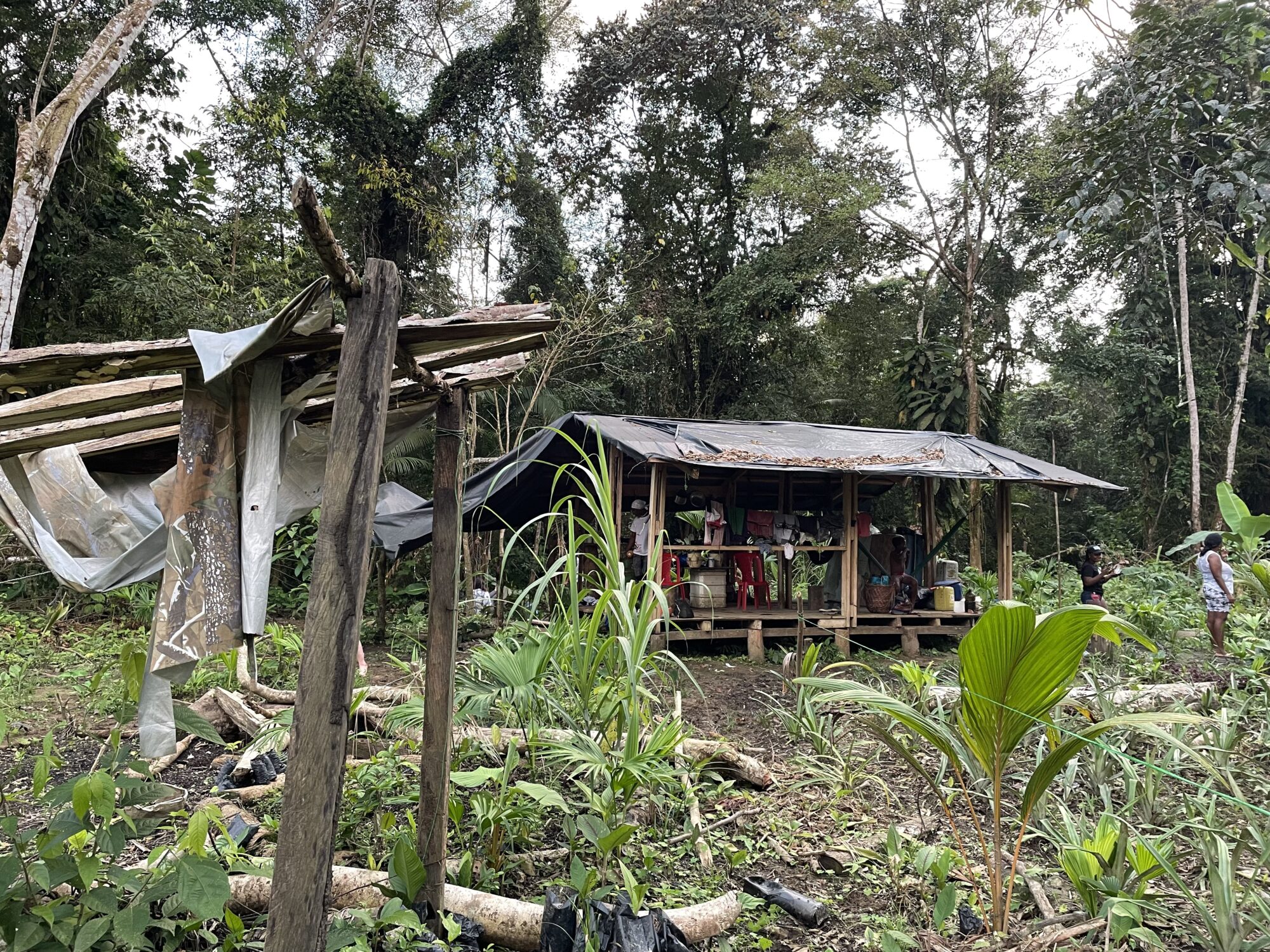
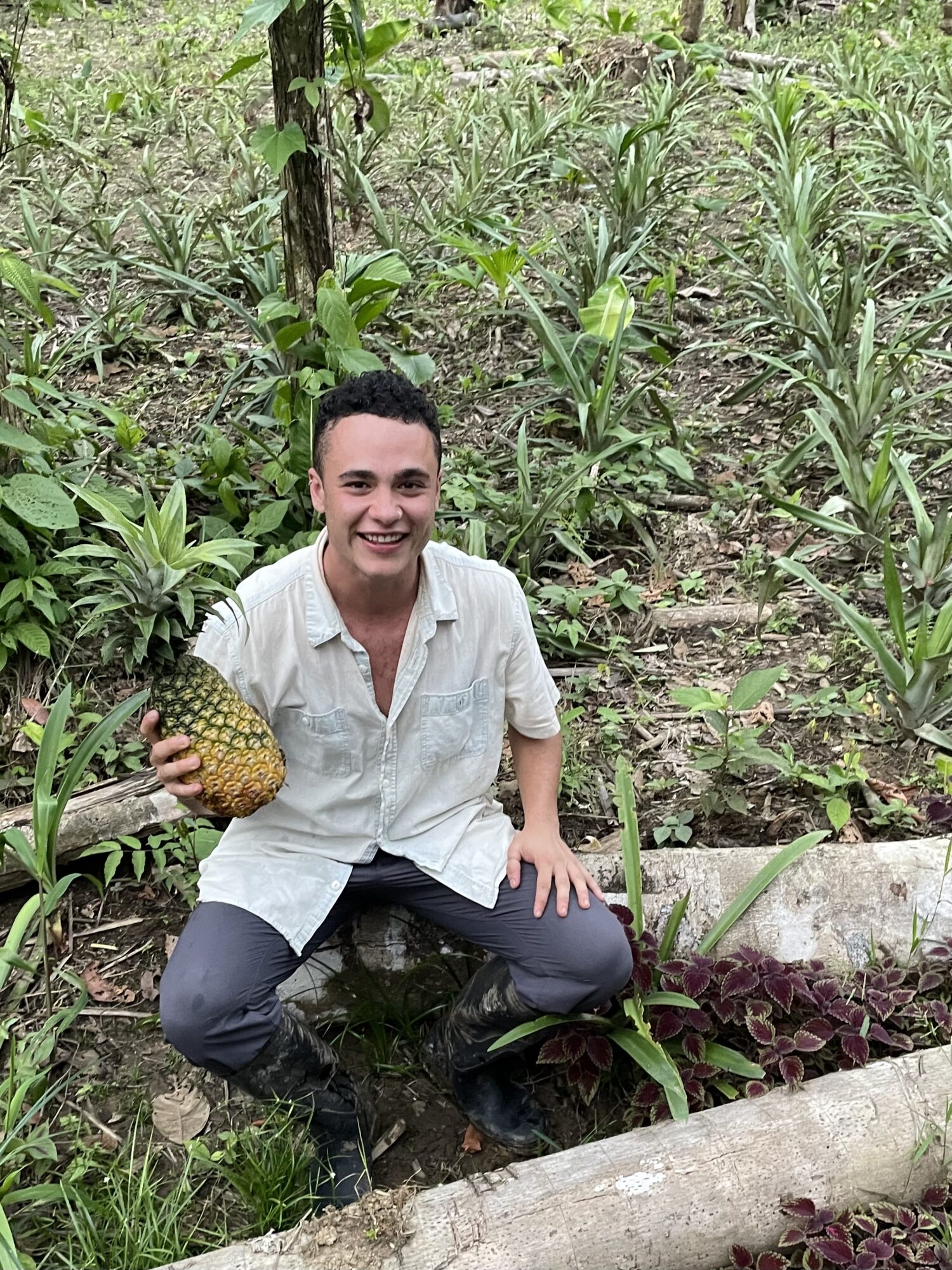
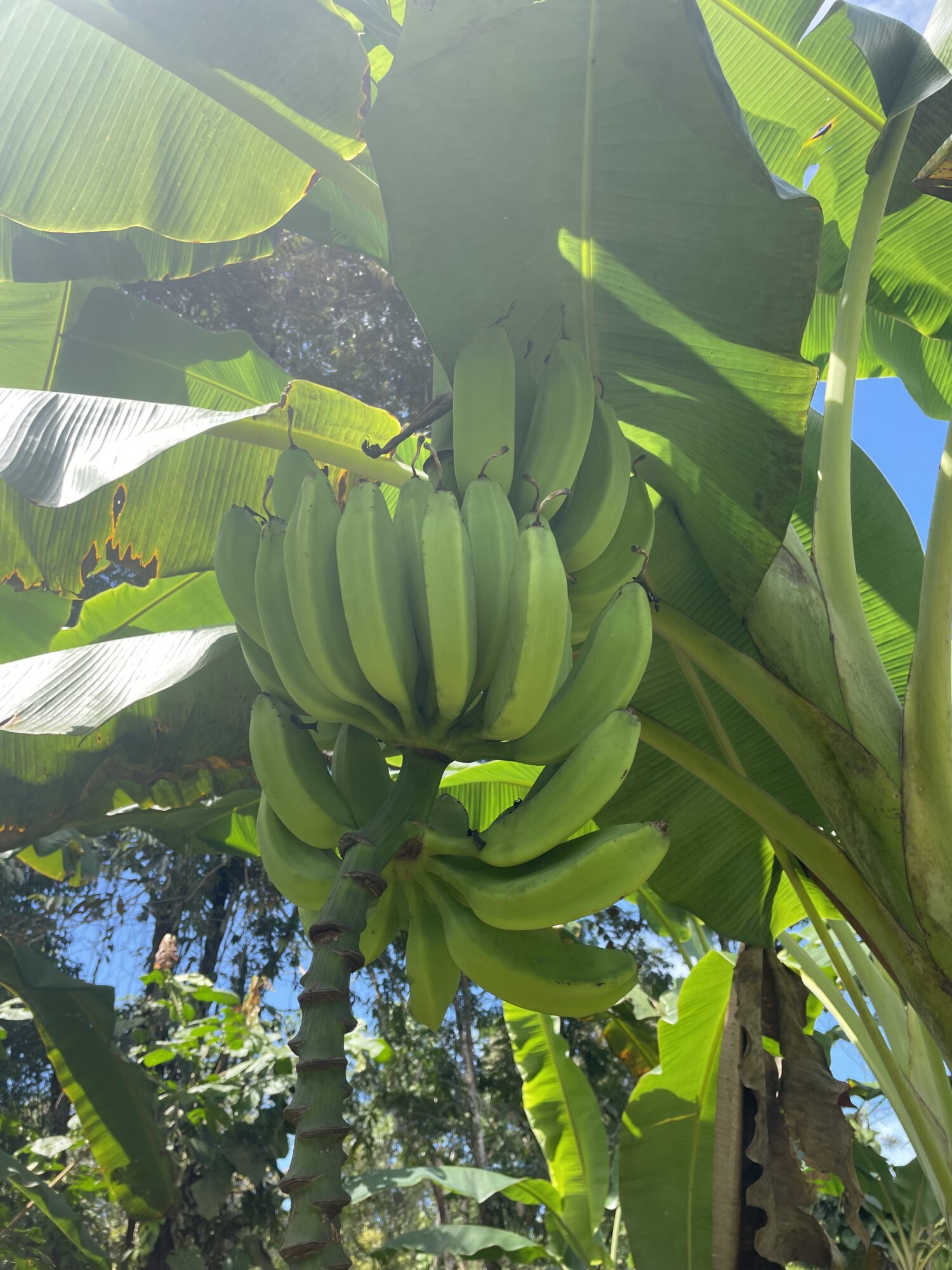
On one of our days out on the farm, we sat for a while preparing a fish stew. The various ingredients used to create this stew provide a good example of the diversity of flavors that can be harvested from the land. We all sat in a small circle, taking turns shredding the coconut, which would be used to make a milk to bread the fish for the stew. During this process, we learned that coconuts are one of Yowar and Yura’s favorite crops to grow because there are so many ways coconut can be used. It can be processed into an oil which can be used as a skin salve, hair product, or cooking oil. In addition, the fruit can be processed into a milk used for thickening soups or stews, dried and shredded, or eaten fresh. Not to mention one of my favorite coconut products: the deliciously hydrating coconut water, which was incredibly quenching after a long day sweating in the rainforest. While shredding the coconut, we passed around a bottle of viche, a fermented beverage made from cane sugar and medicinal herbs. Resembling the dark color of spiced rum, but with a lower ABV, the drink has strong herbal notes from its infusions of cinnamon, vanilla, and ginger (harvested directly from the farm, of course) along with other locally sourced plants. I chopped up an onion, some peppers, fresh cilantro, and garlic to add into the stew. Yowar prepared the fish (a freshly caught albacore tuna) first by boiling the whole fish, then carefully removing the bones from the softened meat. We juiced some fresh limónes into a pitcher of rainwater and placed a big rock of panela cane sugar in the bottom to dissolve and sweeten the lemonade.
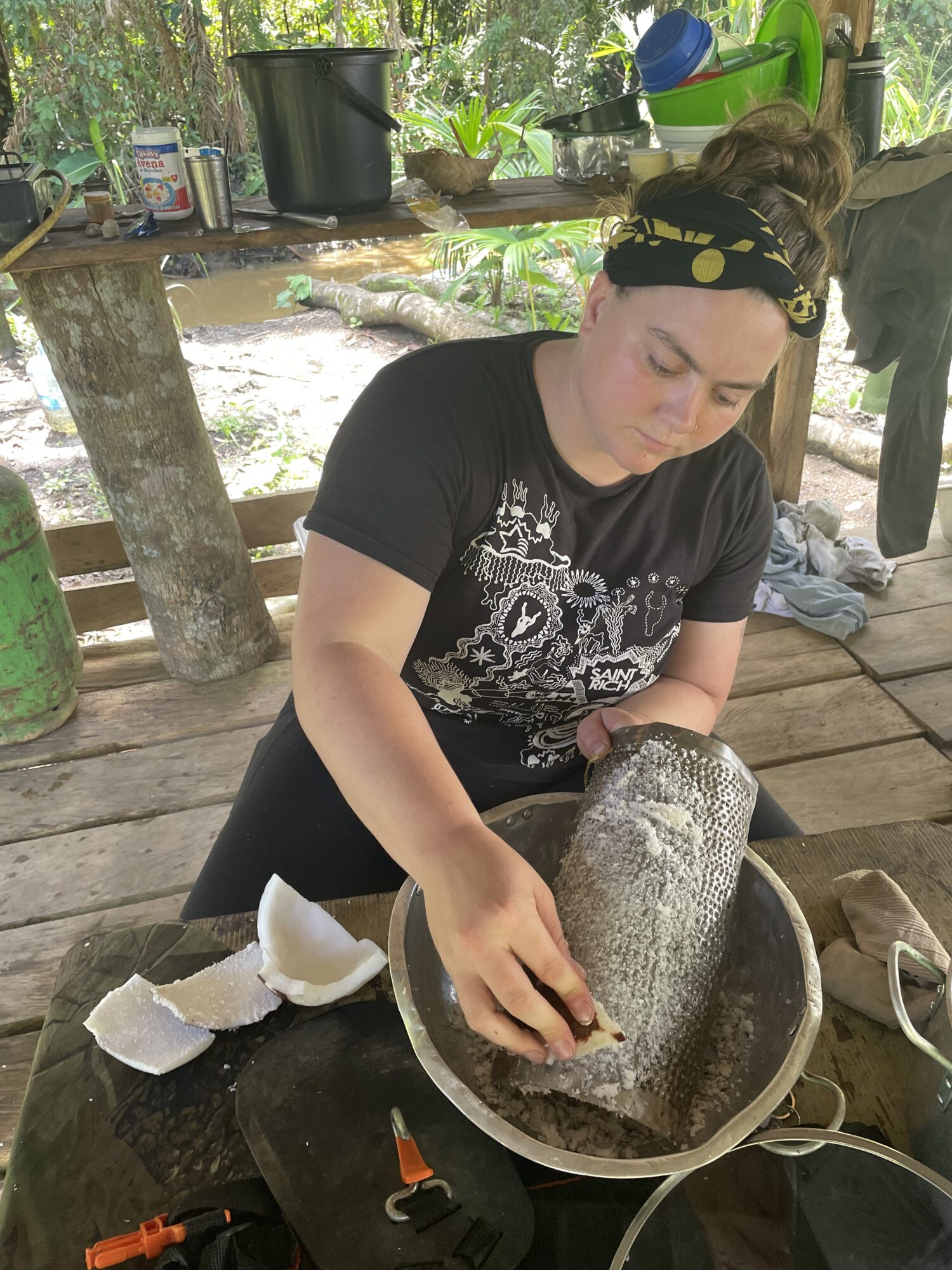
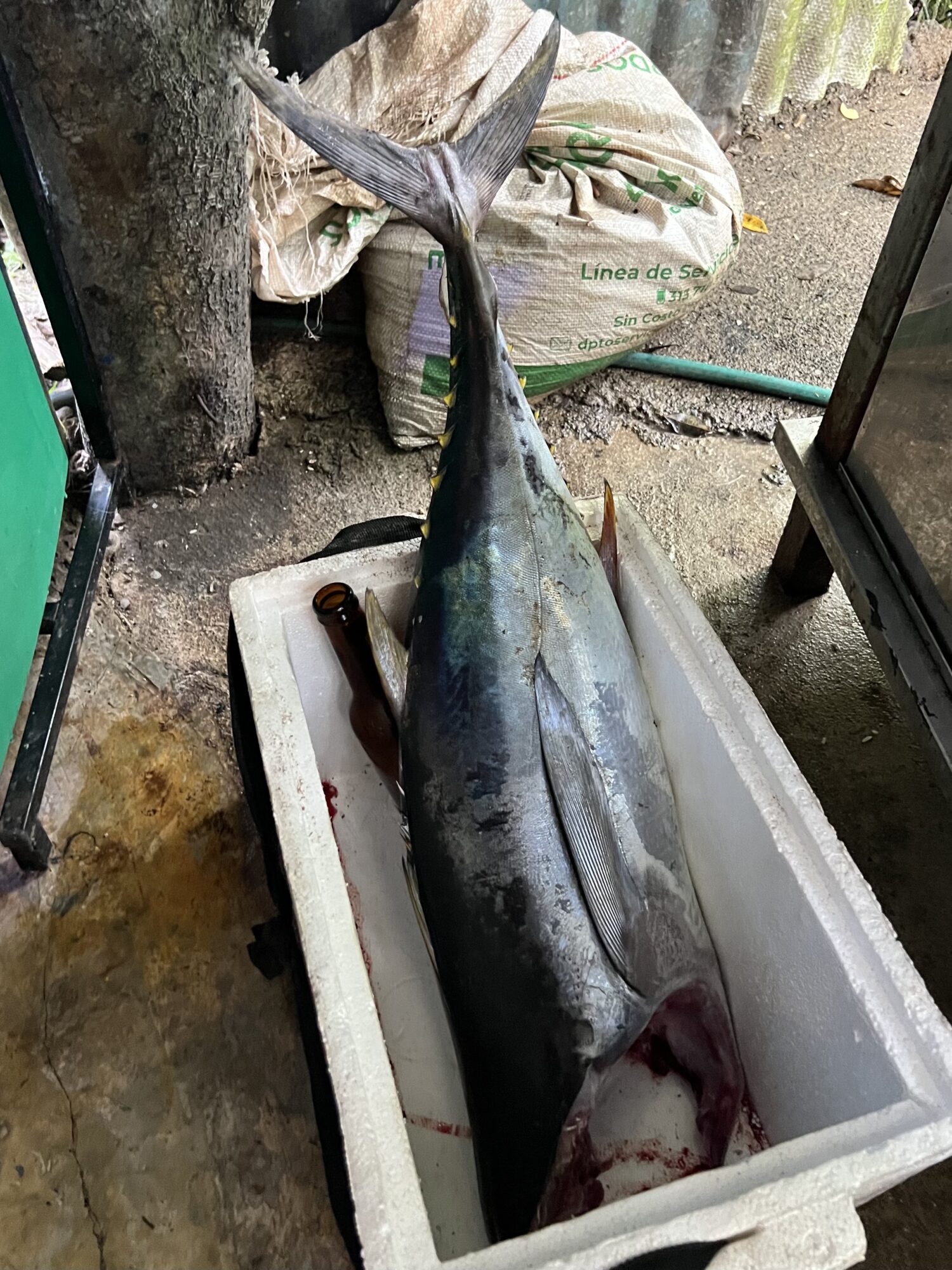
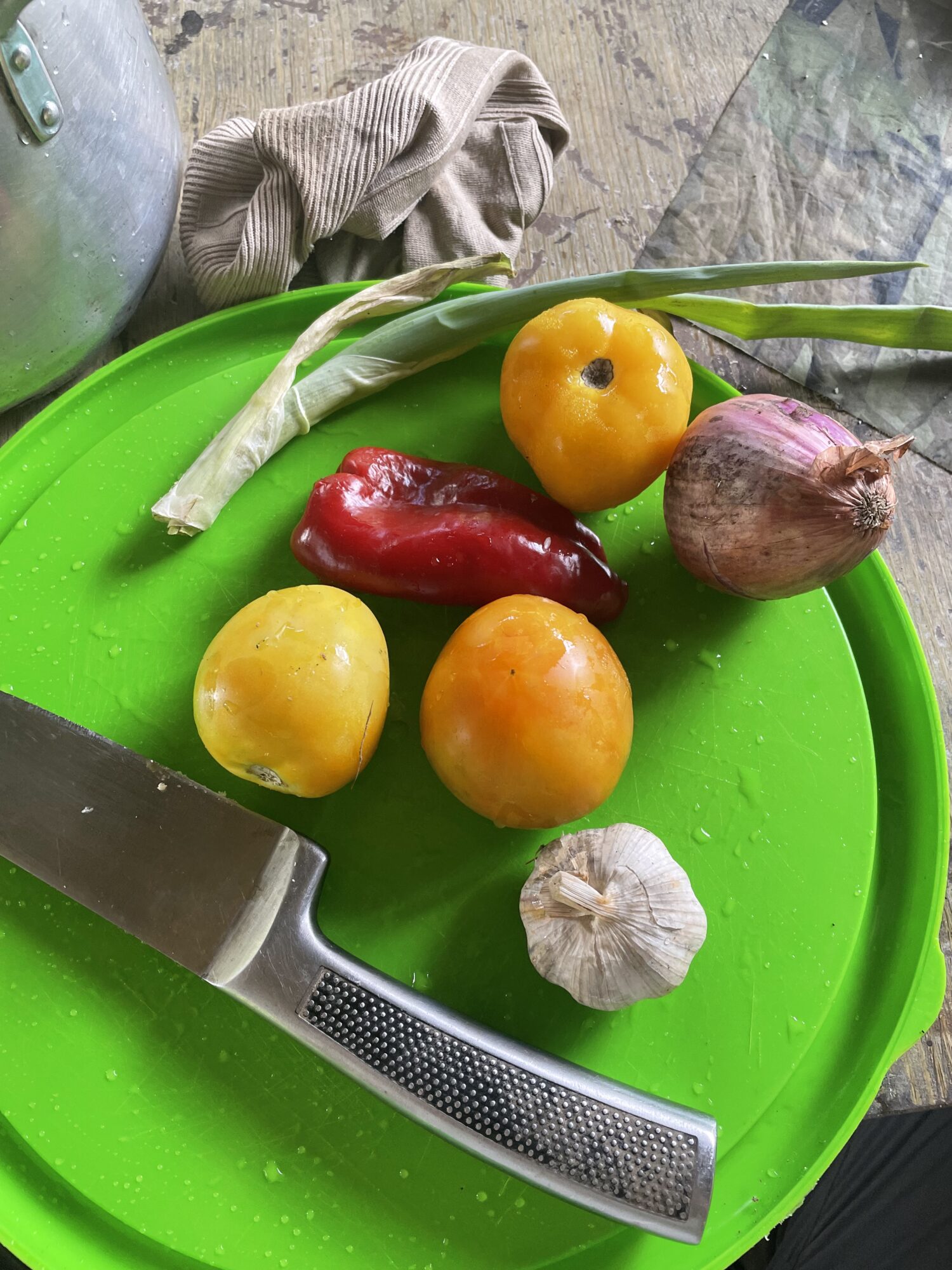
Transnational Solidarity in Community-Based Farming
While each of us prepared a different component of the meal, I listened to Yura and Yowar describe their vision for the land. I found that their vision is not so different from our mission here at POP– broadly, to build and sustain community through our shared respect for the land around us. First and foremost, they imagine a future that resembles something of the past, where the predominantly Black and Indigenous populations of Nuquí hold the means of control over the sourcing and production of local healthy foods. Secondly, as an artist and educator, Yura Sapi hopes to create a space in which everyone can feel comfortable expressing themselves. They are working to create community retreats for artists, performers, and members of the LGBTQ community. And finally, as an architect and builder, Yowar envisions creating dormitories and gathering spaces for visitors and local community members alike to create music and share meals. While the climate and landscape were quite different from the Philly urban landscape, overall, my trip to Nuquí felt quite similar to the visits I frequently take to community farms and orchards as part of my job at POP. I was welcomed with warm hugs, delicious fruit, and a hopeful vision for the future. I am endlessly grateful to our hosts Yura, Yowar, and Berna (Yowar’s mother) for welcoming me to their community. Please consider reading about the work of Protectores de la Tierra and making a donation to support their vision.
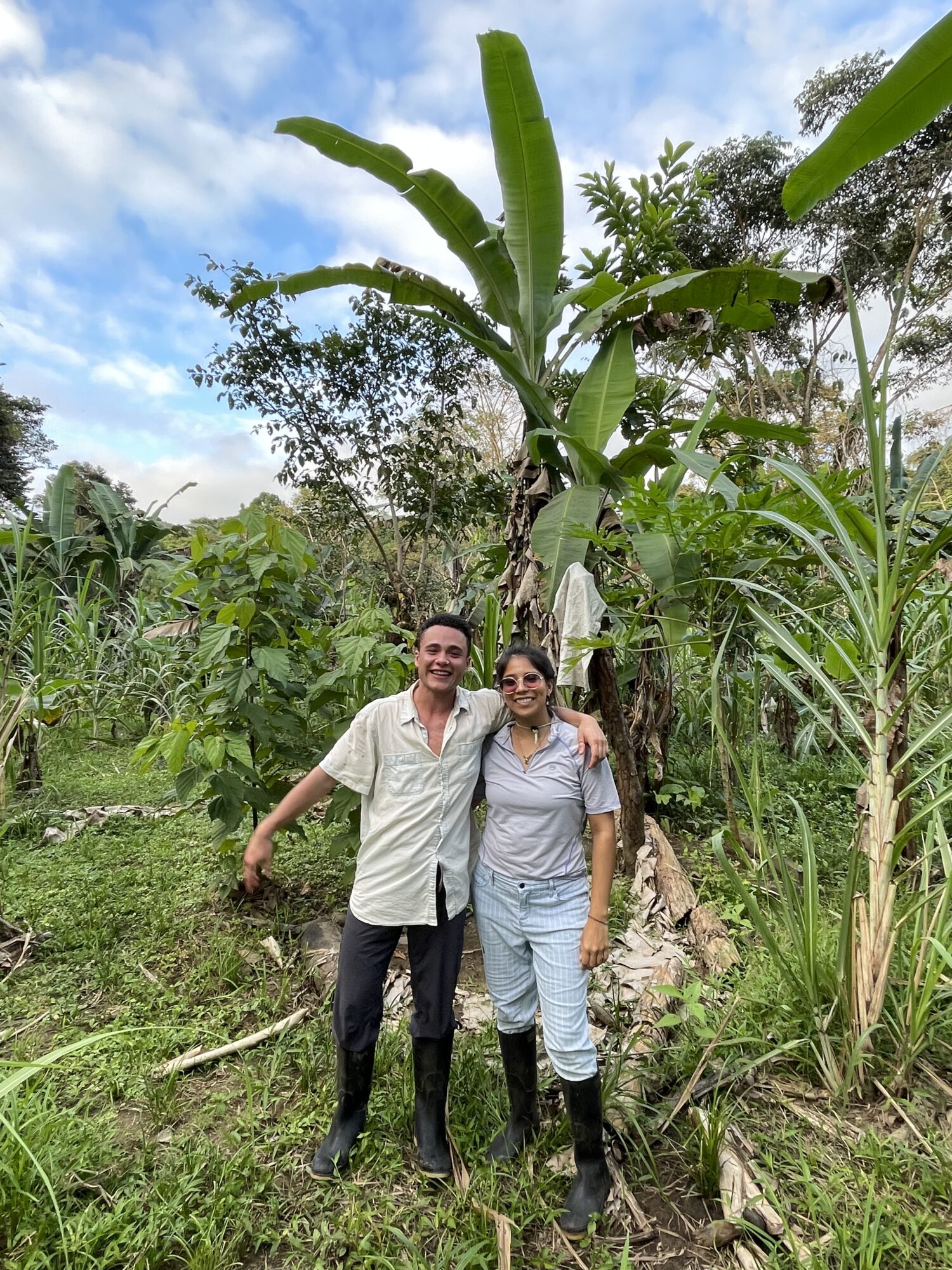
This blog written by POP Orchard Assistant Erika D’Andrea.
SUPPORT US! If you found this entry useful, informative, or inspiring, please consider a donation of any size to help POP in planting and supporting community orchards in Philadelphia: phillyorchards.org/donate.